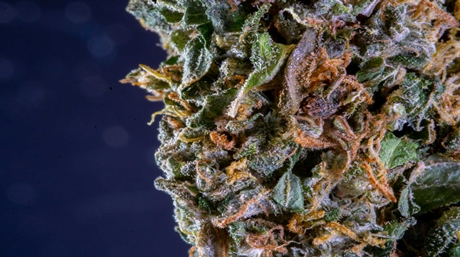 By:
Justin Time
By:
Justin Time
The term Low Stress Training (LST) is used to refer to a way of growing cannabis plants. Low Stress Training is a technique used to control the height, shape, and yield of cannabis plants. By making use of this method of cultivation the lower shots get more light. This allows your plant to grow better and produce more. Check our guide!
The idea is to train your cannabis plant to grow wider and to produce many colas. A cola is the flowering top of the plant where a bud develops. Healthy plants grow one main cola and several smaller colas around the plant. The main cola usually produces the largest bud, with the other colas producing smaller ones. The idea behind LST is to get the smaller colas to produce larger buds. By engaging in LST, you expose the rest of the plant to more light and this can bring about a larger yield.
Low Stress Training allows growers to fully exploit the light in their grow area (whether that be indoors or outdoors). Cannabis plants naturally grow in a cone shape. The main branch has the main cola at the top of it. The idea behind Low Stress Training is to spread the plant out so that it has a more circular shape. Instead of a tall cone, you want to try to train your plant to a more flattened disk.
By encouraging your plant to grow a more flattened canopy, you allow the entire plant to have more access to light. When the other colas have more access to light, they will begin to produce a better yield. The reasons for this include increased photosynthesis, more access to nutrients, and the plant will more evenly distribute water.
Low Stress Training should be started during the vegetative stage. During the vegetative stage, the branches of the young cannabis plant are usually more pliable. This makes it the perfect time to influence the growth of the plant.
During the vegetative stage, applying LST will cause the branches and shoots to spread out. This will cause the canopy to expand. When the plant enters the flowering stage, many colas will start to grow. This should have the effect of increasing the yield from your plant.
Check out our Mr. Sour who will also guide you through the process in these video:
How do you train the plant using LST?
You want to begin training your cannabis plant when it is young and in the vegetative state. This way you are much less likely to harm the plant. As soon as the stems are long enough, you will want to begin to tie them off.
Low Stress Training involves gently bending and tying the stems off. It is low stress because the gentle bending and tying off allows the plant to become used to the process and to adapt. Basically, you are trying to minimize shock as much as possible.
As soon as the stems and shoots are long enough to be tied down, you can begin. You will want to make sure you are using something gentle to tie the plants down. We recommend finding plant tape or pipe cleaners. In a pinch, I have used torn-up paper towels twisted into a twine. I don’t recommend this long term, but it can work if you put in the effort.
Basically, you want to use something gentle to make sure that your plants are tied down. You do not want to use an exposed coat hanger or wire. These will cut into the plant as it moves and grows. You want to avoid this at all costs.
Wondering how to use LST on your 6-week-old cannabis plants? Check this video out:
You will need a few pieces of equipment specifically for Low Stress Training. This is in addition to the normal equipment you would need to grow cannabis. Before you begin, gather up the following:
You will want to top off the plants when they have 4-6 nodes. Make sure to leave a little bit of the stem (around 1/16 – 1/8 of an inch).
Remember to maximize the effectiveness of the procedure, you should start training the plants when they are young. This will enable you to make the plant grow in width, rather than height. You should aim at doing this procedure during the vegetative stage. You should stop implementing the procedure when the plants enter the flowering stage. Once signs of the flowering stage are visible, stop the process.
Low Stress Training is used to form a relatively flat, even canopy. This will help all the colas and buds to have access to direct light. Low Stress Training allows even distribution of light will provide the entire cannabis plant with the ability to maximize buds, instead of concentrating most of the plants’ growth on the main cola. Allowing the entire plant to have even access to light will help to create larger and more buds.
When you opt to make use of the LST method, the gentle manipulation of the plant helps to produce multiple areas of production on the plant. You can also use the reduction in height to make sure that the pant does not grow too high. This makes sure that the plant won’t block out any light.
So why would you want to use the Low Stress Training technique to grow your cannabis? What benefits does the technique produce? Growing cannabis using this procedure produces benefits that a normal grow does not provide.
• Bigger yields from the same grow lights and setup.
• Complete control over the height, shape, and size of your plant (the method is applicable for both indoors and outdoors plants).
• Increased harvest yields.
• Plants will produce more big buds instead of a single main bud and a lot of tiny ones.
ScrOG, or Screen of Green, is a much more advanced version of Low Stress Training that involves using a screen or net in order to train the shoots of your cannabis plant. This is a more labor-intensive technique because you will need to weave the stems through the screen in order to train them. It is not the most difficult version of training your cannabis, but it does require some more work ahead of time, in order to make the screen. There are plenty of resources about it online, including our guide on how to ScrOG. If you like low stress training and want to expand your practice, you should definitely research this type of growing.
I know I said earlier that you should stop Low Stress Training when your plants start to flower. You will want to concentrate your training on when the plant is in the vegetative stage and is more pliable. It is possible to conduct low stress training during the flowering stage. It is best to do this in the earlier stages but can be done during the entire life cycle of your plant. You will need to be very careful and gentle with your plants if you choose to do this. The chances of harming your plant increase as they get older.
There are a few reasons for using LST on your cannabis plants after they flower. One reason is that you are having issues with getting light to the lower branches of your plant. Another issue might be that you are not getting enough airflow and want to spread the plants out a bit. Still, another is that when put under stress during the vegetative and early flowering phases, a plant can produce stronger clones.
I must stress that you will need to be even more careful when doing low stress training on a mature plant. They are less pliable and also have begun to grow in a certain way. You are basically undoing the growth of the plant up to that point. Gentle and careful are the two words you will want to keep in your mind when doing this. Having said that, I think that it is better to start training early so that you run less of a risk of damaging your plant.
Low Stress Training is a great way to maximize the yield from your cannabis plant. It is also the easiest training you can do for your cannabis plant. If you feel adventurous and want to explore new ways of growing cannabis, this is a great way to get started. Happy Growing!













Related Posts

Have you ever seen a cannabis plant with bug buds growing above a nylon screen? Well, that screen is referred to as a screen of green or a ScrOG in short form.

Welcome to the exciting world of cannabis and cryptocurrency! BTC and marijuana make the perfect match, offering a seamless and secure way to purchase weed seeds and accessories.

You may have heard that autoflowering cannabis plants are low-maintenance and don’t require a lot of training, and that is true – but there are still ways you can help your cannabis plant produce more buds and increase your yields. One technique is called low stress training, or LST for short. Read on to learn how to properly low stress train your autoflowers for maximum results.